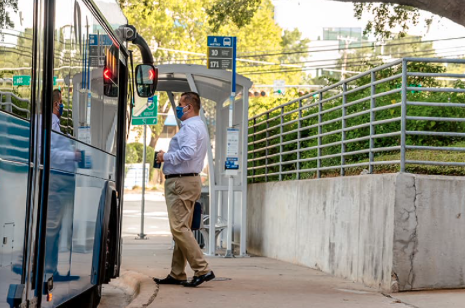Cap Metro board hears results of first post-pandemic Origin & Destination survey
Wednesday, October 25, 2023 by
Nina Hernandez Besides interrupting Capital Metro’s transportation services, the pandemic also interfered with its process of measuring its ridership, typically done every five years. On Monday, for the first time since 2015, the Capital Metropolitan Transportation Authority Board of Directors heard a presentation on the Origin & Destination Survey.
“We came back around in 2020 in hopes of gathering some good information – particularly from Cap Remap – but we all know what happened in 2020, so we had to stop the survey right in the middle of data collection,” said Jennifer Govea, service analysis manager in Capital Metro’s planning department.
The 2023 report will serve as the new post-pandemic baseline for the data, inform long- and short-range planning efforts, be shared with other agencies for travel demand forecasting and allow Capital Metro to meet its federal reporting requirements. Capital Metro uses the report to gather statistically valid and accurate data on patron travel behavior and demographics. The 2023 report was conducted by the ETC Institute.
ETC Institute collected more than 25,000 surveys from January through April on Capital Metro buses, Metro Rapid, Metro Rail and pickup services. Survey gatherers equipped with tablet devices boarded the routes and interviewed passengers on where their trips started and ended, usage information and demographics.
The 2023 origins map shows where in the region surveyed riders started their journeys. The 2023 destinations map shows where in the region those same riders were headed. Govea explained that on the maps, the lighter shaded areas represent areas with lower rider density, and the darker shaded areas represent areas with a higher rider density.
“Those lighter shaded areas are important because that shows how far some of our riders are coming to utilize our services,” Govea said. “A similar map with regards to destination, where we see our riders are going outside of our service area – to some distances far out of our service area.”
Some of the main observations of the survey include that the top origins and destinations are currently along the central core of Austin, and regional planning will continue to be a key component of future development. The data also supports current Project Connect plans with the documented demand around the University of Texas and downtown, as well as medium-shaded areas north and south and toward the Austin-Bergstrom International Airport. The survey also found that half of riders are new users since the pandemic.
In terms of trip purpose, home is the overwhelming choice both in 2023 and in 2015. However, the data shows college students are utilizing the service less in 2023 than in 2015 (18 percent and 21 percent, respectively). Shopping trips are up to 10 percent from just 4 percent in 2015.
Frequency of use also changed. In 2015, 39 percent of users reported riding six or seven days per week. That number is down to 35 percent in 2023. Fewer females are riding alone (43 percent in 2015 compared to 38 percent in 2023) than males alone (56 percent in 2015 compared to 60 percent in 2023).
“If they’re utilizing it less for college and work, they’re using it less frequently, but that means that one to four days a week increased,” Govea said. “Some of these results are not too surprising based on what we know – just kind of solidifies it.”
Transit dependency has also increased since the pandemic. In 2023, 80 percent of those surveyed indicated that they are dependent on transit to get around. That’s up from 77 percent in 2015. In terms of race and ethnicity, most groups have become more transit dependent since the pandemic, with African American riders being the most transit dependent (84 percent in 2015 versus 88 percent in 2023).
“A lot of it’s not too surprising, some of the results, with all the effects throughout the pandemic, and understanding what’s going on – not just in our area, but across the country. Less frequent riding. We’re still at about 75 to 80 percent of our ridership levels pre-Covid,” Govea said. “Those hybrid work and school are still occurring. So we don’t have those additional riders. More than half of our riders are new since the pandemic.”
The Austin Monitor’s work is made possible by donations from the community. Though our reporting covers donors from time to time, we are careful to keep business and editorial efforts separate while maintaining transparency. A complete list of donors is available here, and our code of ethics is explained here.
You're a community leader
And we’re honored you look to us for serious, in-depth news. You know a strong community needs local and dedicated watchdog reporting. We’re here for you and that won’t change. Now will you take the powerful next step and support our nonprofit news organization?








